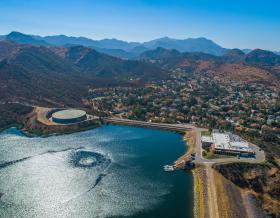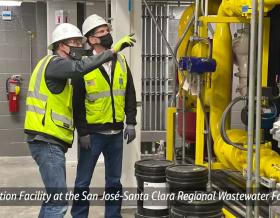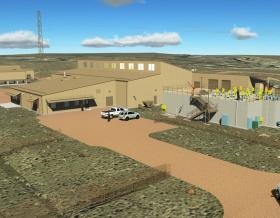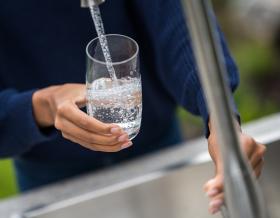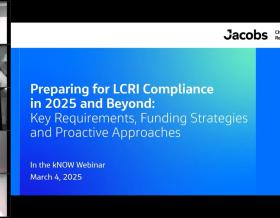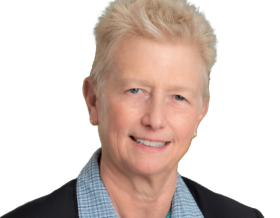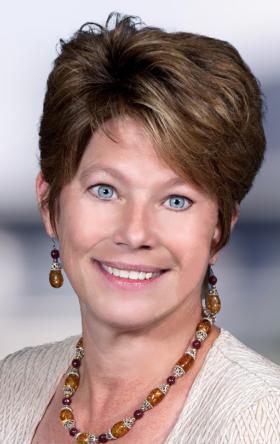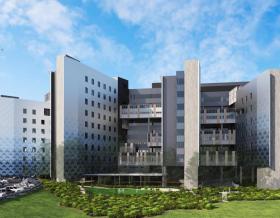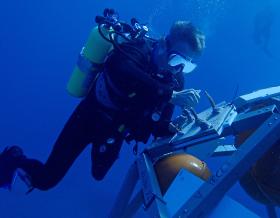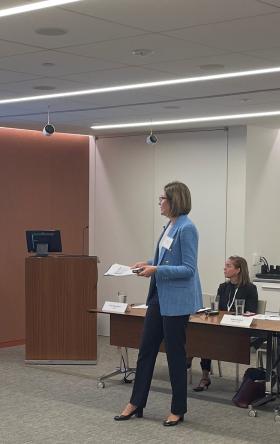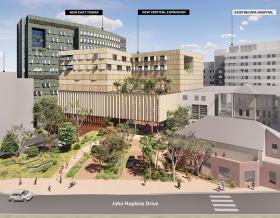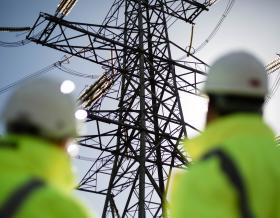PFAS in Biosolids: Lessons from Full-Scale Facilities
By Arifur Rahman and Todd Williams

Per- and polyfluoroalkyl substances (PFAS) represent a OneWater challenge – they impact every aspect of the water cycle and addressing them requires coordinated action. While regulations have primarily focused on removing PFAS from drinking water, attention is now shifting to their presence in wastewater and biosolids.
Conventional treatment methods at water resource recovery facilities (WRRFs) are generally ineffective at removing PFAS from liquid or solid streams. This presents a challenge for utilities, as evolving regulations around PFAS create uncertainty for planning future process upgrades.
To support utilities and biosolids producers, Jacobs evaluated several biosolids products from 15 full-scale facilities for a new research study published in the Journal of Water Process Engineering. These samples, derived from non-industrially impacted sources, underwent composting (aerobic), thermal drying and high temperature pyrolysis. The study analyzed final PFAS concentrations and assessed the effectiveness of each treatment method in reducing or eliminating PFAS from the initial feed solids. We measured 24 PFAS types using the U.S. Environmental Protection Agency’s (EPA) modified Method 537.1.
Key findings include:
- Composting: No PFAS removal was observed when primary sludge (PS) had not undergone a liquid aerobic treatment. However, a 9-20% reduction in total quantifiable PFAS was seen when sludge was treated using an aerobic activated sludge process. No removal was observed when sludge was further treated via anaerobic digestion. These results highlight the need for further research into PFAS fate in composting processes, particularly the impact of upstream liquid and solid treatment methods.
- Thermal drying: This method showed some reduction of PFAS levels (15-31%) in biosolids, though samples from primary treatment following biological nutrient removal (BNR) without anaerobic digestion showed no measurable change. The study found a positive correlation between dryer inlet temperature and PFAS reduction, indicating that higher temperatures generally improve removal effectiveness.
- Pyrolysis: A bench-scale setup using anaerobically digested dried biosolids pyrolyzed at 700⁰C resulted in more than 99% reduction in measurable PFAS mass. Pyrolysis proved highly effective at significantly reducing or eliminating detectable PFAS in the resulting biochar.
These findings are especially relevant to utilities and biosolids managers seeking strategies to minimize PFAS in wastewater solids and improve long-term management practices. The study provides utility planners, operators, engineers and administrators with a deeper understanding of how PFAS enter biosolids, the technologies available for treatment and the evolving regulatory landscape shaping future solutions.
The study was published in the Journal of Water Process Engineering's special issue on PFAS Management and is available to read here.
About the authors

Dr. Arifur Rahman is a senior water resource recovery technologist at Jacobs who has been involved with the functional design of numerous water resource recovery facilities across the U.S. His technical interests including high-rate activated sludge systems, carbon capture from wastewater to enhance biogas production, nutrient removal, pilot-scale reactor design and operation and process modelling. Arifur is involved in various research and development initiatives related to water resource recovery and has authored dozens of industry journal articles, papers and book chapters published by the Water Environment Federation (WEF) and International Water Association (IWA).
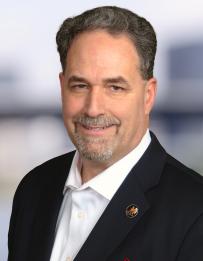
As Jacobs Global Principal for Residuals Resource Recovery, Todd Williams is an expert in residuals and biosolids management. Todd has supported dozens of biosolids and residuals management master plans in his 44-year career which include adaptive planning to manage emerging contaminants such as PFAS. Todd leads a team of biosolids and residuals technology experts capable of engineering every wastewater residual and biosolids treatment system available today. Todd is a WEF Fellow, past Chair of WEF’s Residuals and Biosolids Committee, member of the WEF biosolids symposia and a member of the IWA Sludge Management Group.



